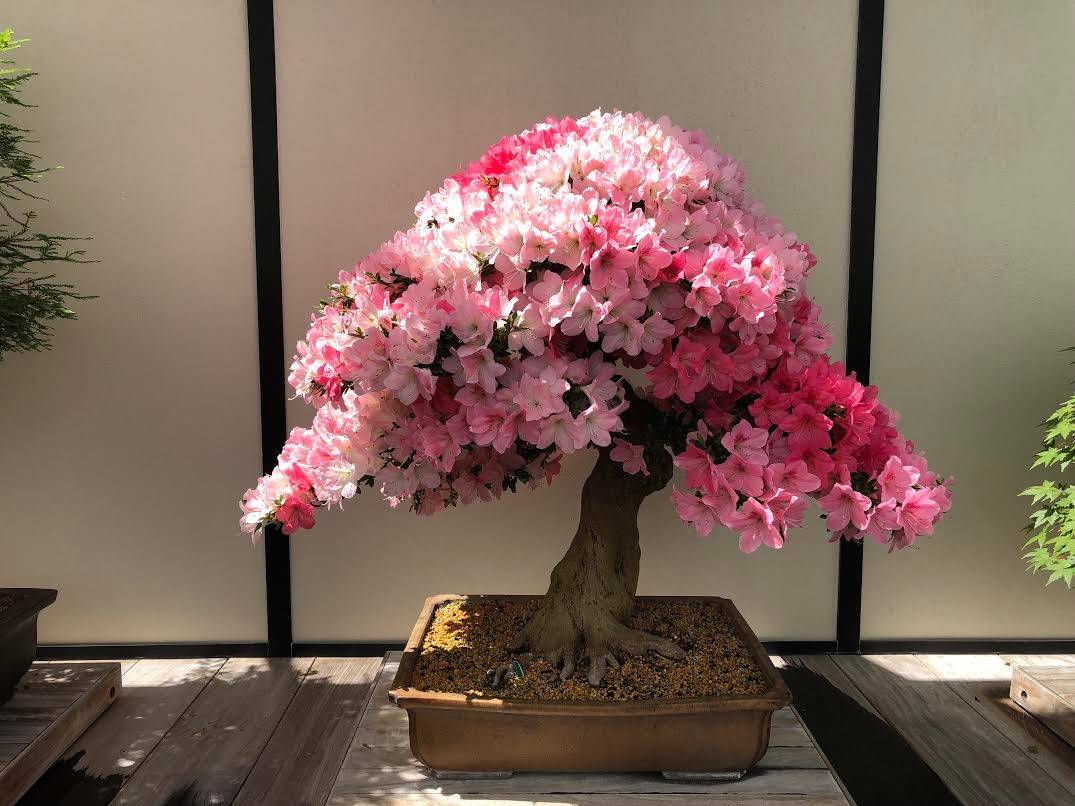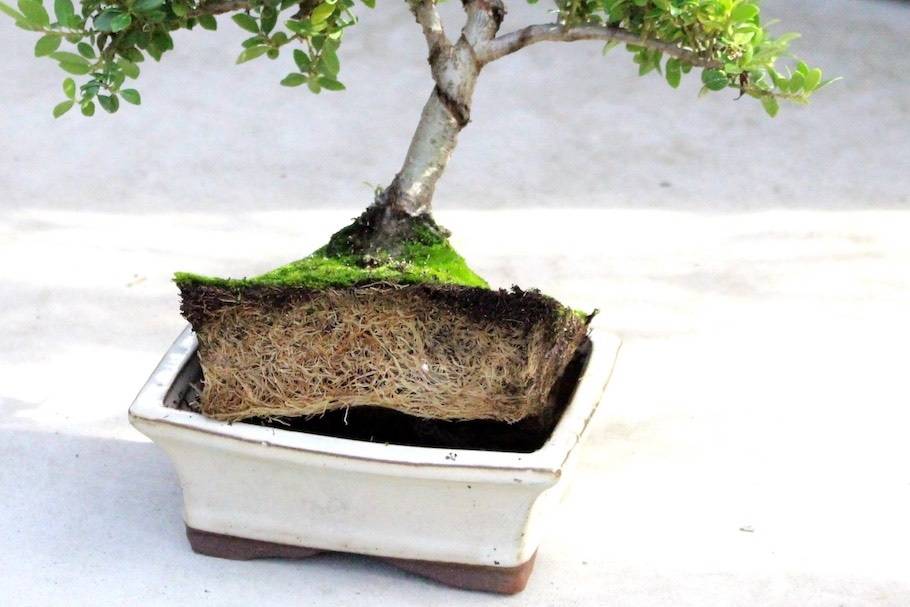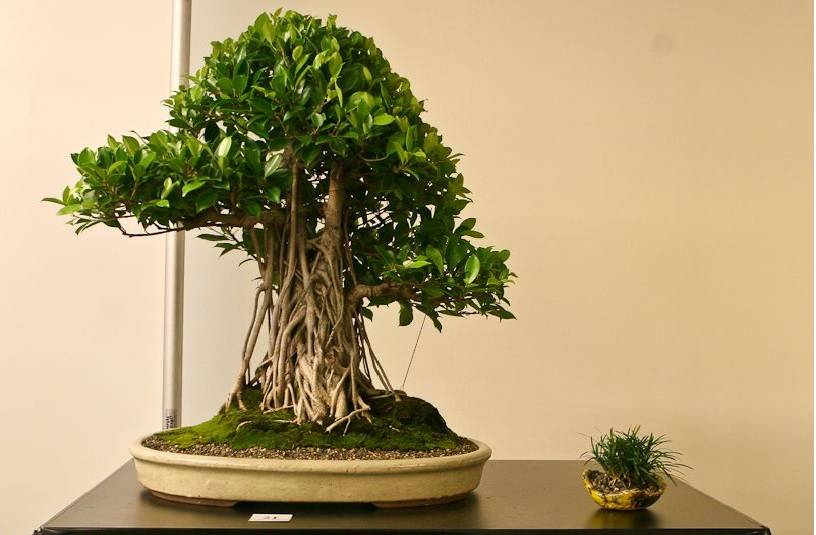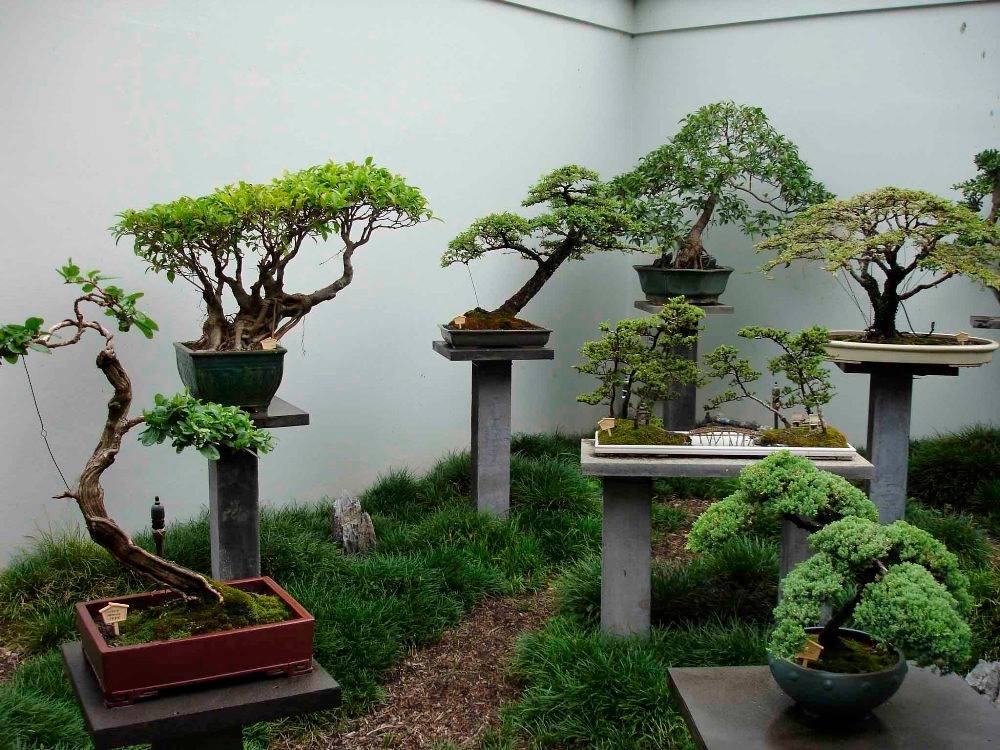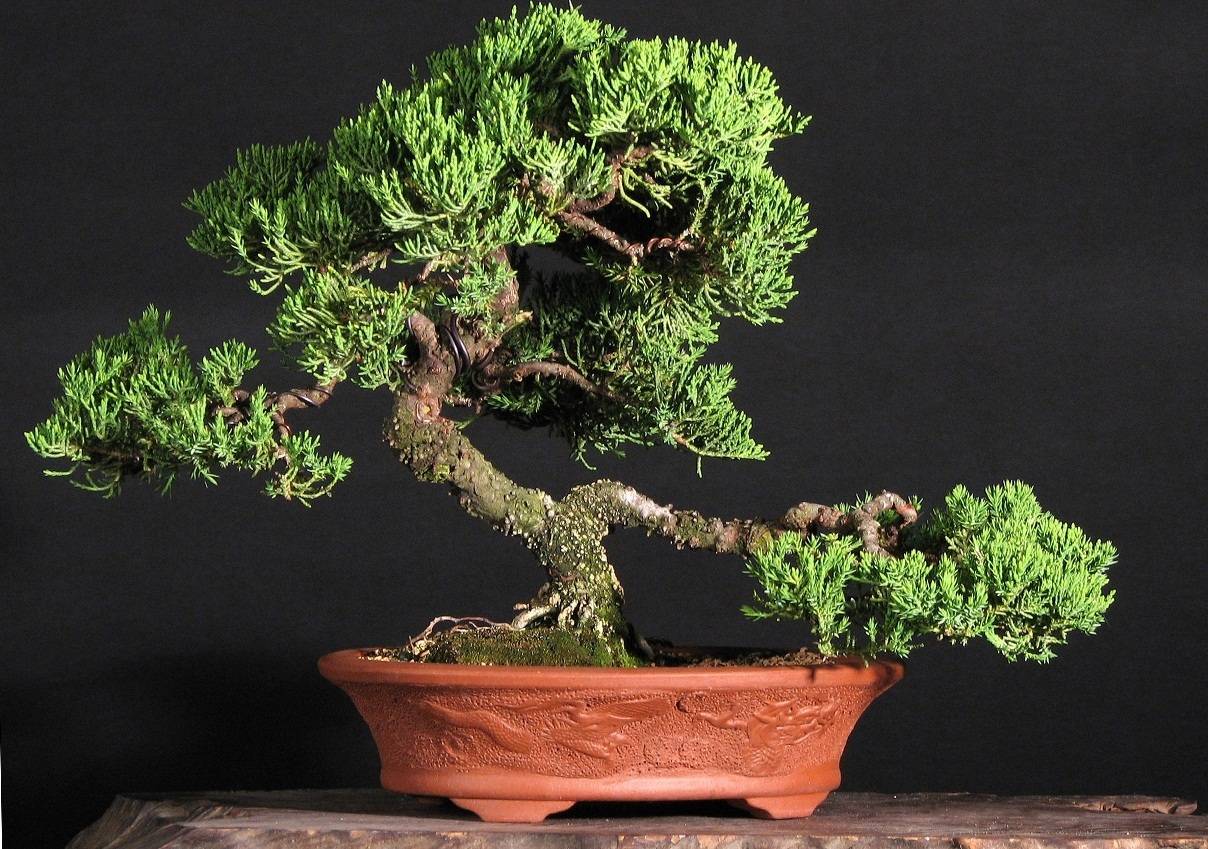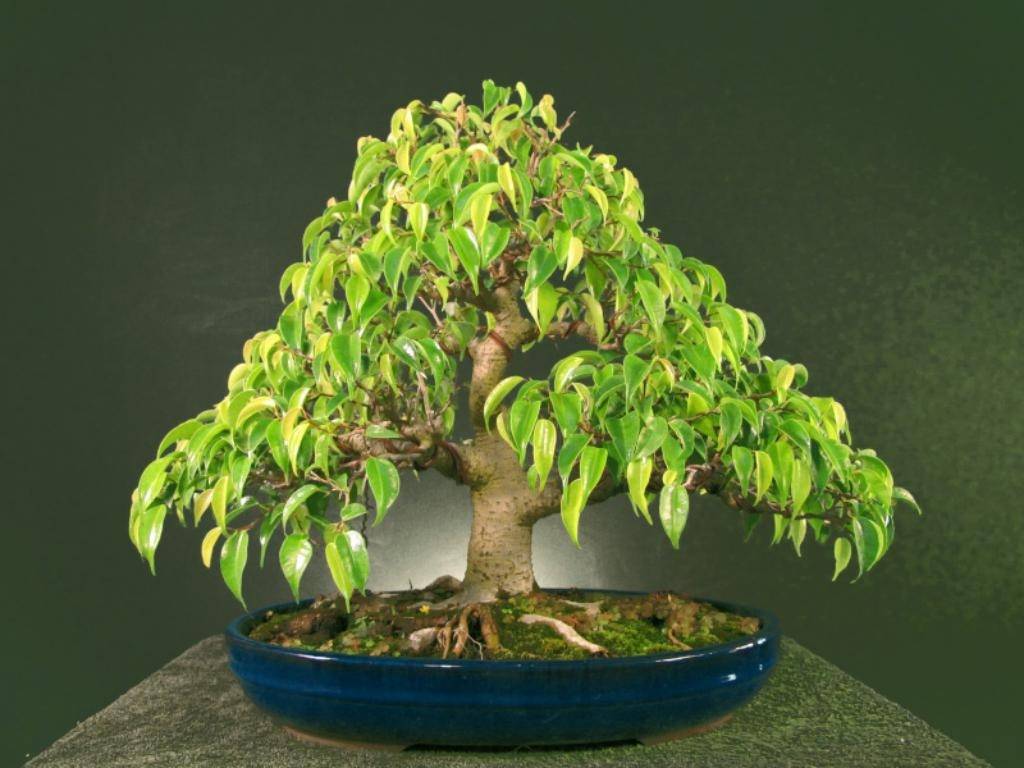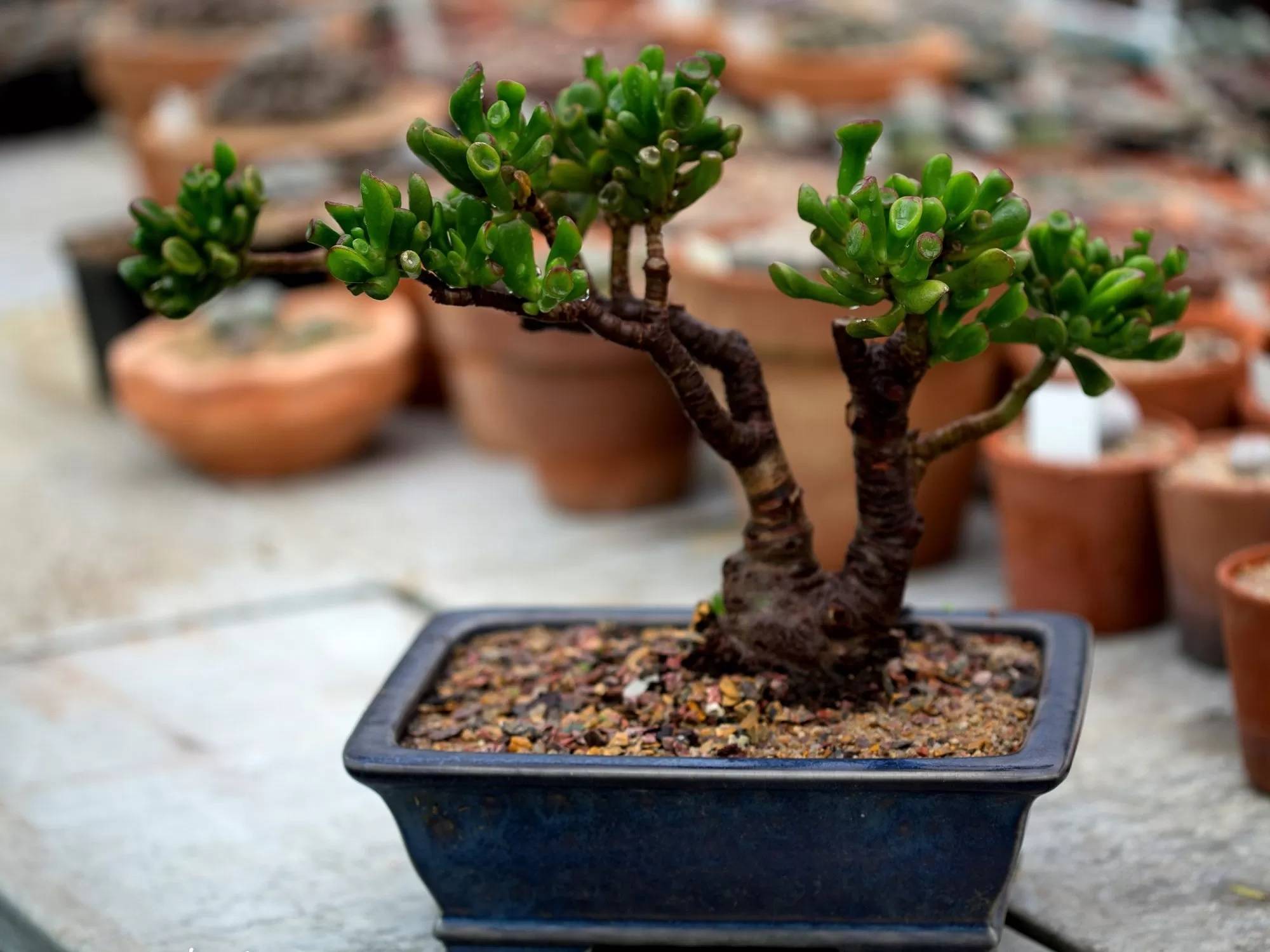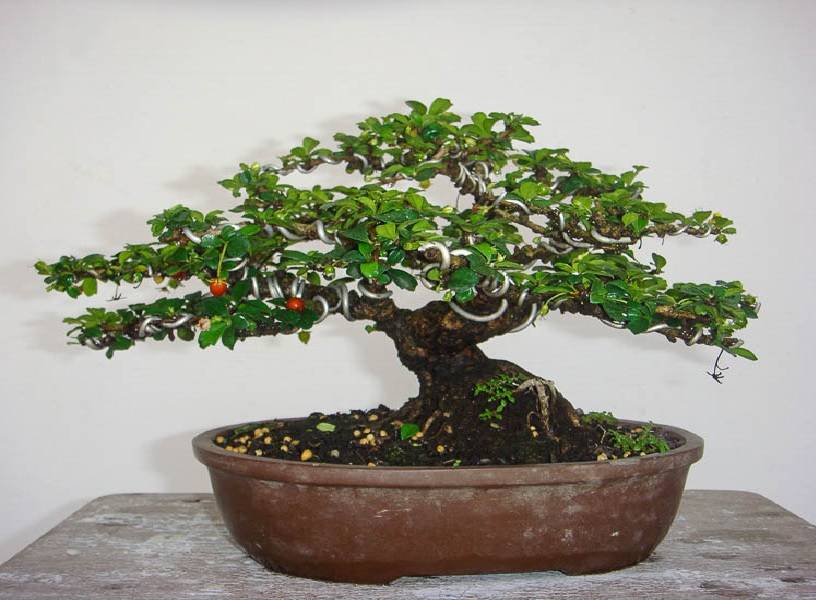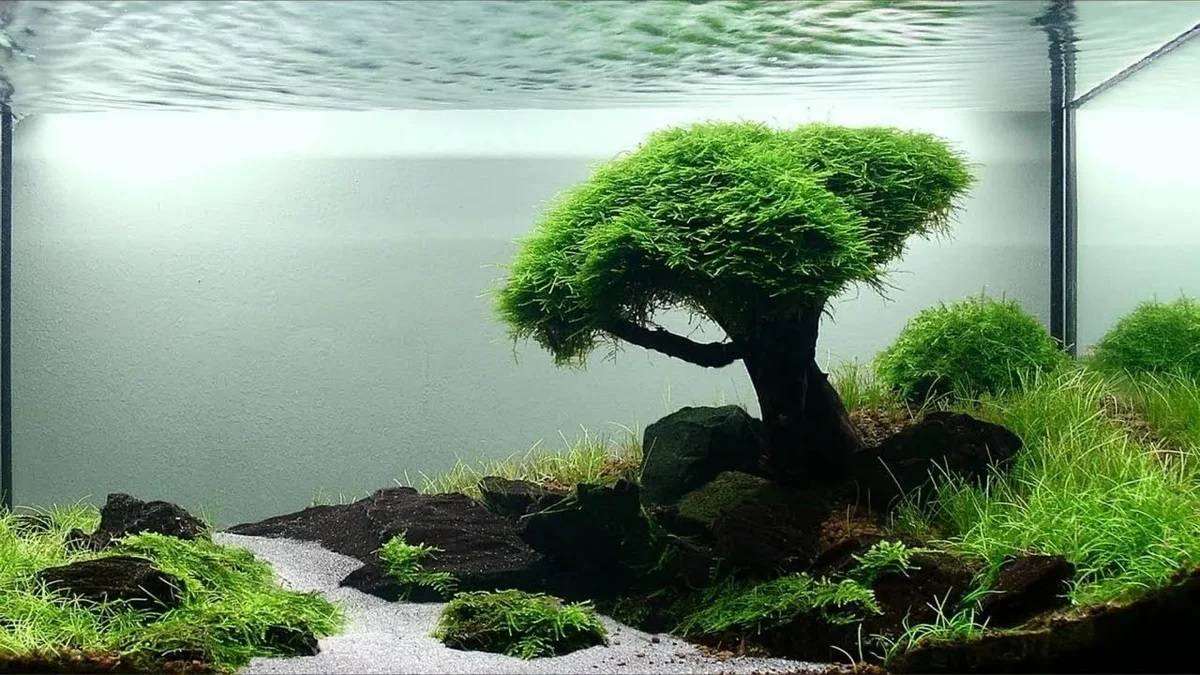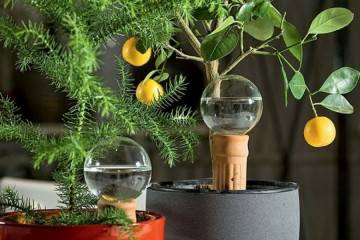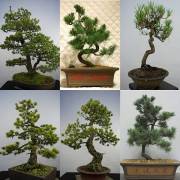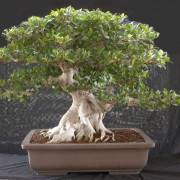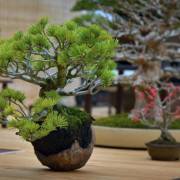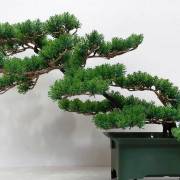DIY bonsai - grow plants at home
Content:
Bonsai is a beautiful plant that can become a worthy decoration for any interior, but it is very difficult to grow it. Before making a bonsai, you need to learn all the nuances of this long and painstaking process that requires certain skills and knowledge. Only by observing all its rules can you create a magnificent mini-tree that will delight you every day with its uniqueness or flowering, like a lilac bonsai.
Do-it-yourself bonsai
You can create a mini-copy of a natural tree yourself at home. To achieve the desired effect, you need to know certain features of the cultivation. To do this, you need to prepare:
- pot;
- priming;
- materials and tools for planting.
The plant requires long-term and careful care. But, if you make all the necessary efforts, this natural creation will become a real highlight in the interior.
Selection of seeds or planting material for germination
Growing bonsai at home can take several years. The first step is to germinate the seeds. Then the owner of the plant needs to carefully take care of the seedlings. And only then it will be possible to form a tree.
It is not always possible to grow bonsai from seed the first time. If you plan to grow a decorative mini-tree on the balcony, it is recommended to give preference to tropical species. These include:
- laurel;
- Korean lemon;
- dracaena;
- a coffee tree.
Beginners are advised to try growing a bonsai from ficus. This is an unpretentious plant that does not require special care. You can also plant pine or fir, which grows very slowly but turns into a beautiful tree.
We select a pot for bonsai
Regardless of what type of plant will be used for growing bonsai, the pot should be wide and shallow. This will ensure proper growth and development. The plant owner will be able to properly control the branching of the roots and form the crown. The correct container should have large drainage holes. To prevent the soil from spilling out, a grid must be placed on one. It is not allowed that there are drawings, beads, beads on the inside of the pot. Solid containers work best.
Bonsai soil
Soil is of great importance for growing an ornamental mini-tree.It should be a nutrient-rich soil that retains moisture well. It is recommended that the mix includes:
- bog clay, which provides an even supply of nutrients, it is best to use clay granules;
- volcanic sand - it increases the porosity of the earth and oxygen permeability;
- river sand - retains moisture;
- humus is a natural humus that accumulates and gives off nutrients well;
- the last component is pumice, it absorbs nutrients and moisture well, and then distributes them throughout the plant. This component contributes to the correct formation of roots and prevents them from growing deep inside the container.
Should I fertilize bonsai
It is very important to properly care for the land during the growth of the bonsai. Since mini trees have a very branched root system, they need as many minerals as possible. Therefore, the plants need additional feeding. The main fertilizers should be used:
- nitrogen;
- phosphorus;
- potassium.
Top dressing should be balanced and have a ratio of 12 units of nitrogen, 6 phosphorus and 6 potassium.
How long does bonsai grow?
In the process of growing bonsai, there are two periods:
- For several years, the owner has to take care of the seeds.
- The second stage is the main one - growing and caring for the sprout.
In Japan, such trees have been cultivated for centuries, passing them down from generation to generation. There are trees that are already about 4,000 years old. Conifers are among the most durable mini-trees.
Bonsai crown shapes
There are many varieties of bonsai forms:
- formal and informal vertical;
- fan-shaped;
- semi-cascade and cascade;
- fallen or dead tree;
- double barrel.
To learn how to properly shape a growing tree, you can attend specialized master classes.
When to transplant
Up to five years, the plant must be transplanted every year in the spring. In this case, the soil must be completely replaced. As soon as the plant turns 10 years old, a planned transplant becomes necessary only every 10-15 years.
After the procedure, the bonsai should not be placed in direct sunlight for two weeks.
Juniper Bonsai
Juniper bonsai is a great choice for both beginners and seasoned professionals. This beautiful tree will be a great decoration for any room.
An unpretentious plant for novice bonsaists
The main advantage of a mini juniper tree is its simplicity. In winter, the plant needs rest, so even watering it is reduced to a minimum.
Requirements for humidity, temperature and lighting
A mini juniper tree will thrive best with a minimum of four hours of sunshine a day. And the soil should tend to be dry. It is helpful to allow the soil to dry completely between waterings.
Juniper feeding
It is recommended to feed the plant once every three weeks. In spring, fertilizers with a high nitrogen content are best. In autumn, its level, on the contrary, needs to be reduced. A balanced fertilization is recommended for the summer period.
Crown formation
The structure of the trunk is not rigid, therefore, unlike other plants, it lends itself to bending. Due to this property, wire can be used to form the crown. It is wrapped around the plant and the trunk is tilted horizontally towards the table.It is necessary to ensure that the wire does not grow into the bark during the growth process!
Pruning leaves and branches
Juniper bonsai are pruned in the spring and fall. New shoots must be removed when they reach several centimeters in length. The roots of the tree should be pruned every two years.
Ficus bonsai
Most often, ficus is chosen to create bonsai. Thanks to its strong stem, powerful roots, good growth rate, it is possible to correctly form a miniature tree.
What types of ficus are suitable for bonsai
The following types are suitable for growing a miniature ficus tree:
- rusty red;
- Benjamin;
- Bengal.
Benjamin ficus bonsai is the most suitable option, since the plant has all the necessary characteristics for a mini-tree.
Choosing the shape of bonsai plants
Depending on the shape of the trunk, there are six styles of forming miniature trees:
- inclined Syakkan - the tree is located at an inclination of 60 degrees. An important feature is that the first branch must be placed against the slope;
- Hokidachi - a branched apex with a straight stem;
- bifurcation of the trunk - Shokan;
- A grove is a composition of several plants;
- Moyogi - the trunk grows with the letter S;
- Tyokkan - the trunk grows tapering from root to apex.
Beginners are advised to start with the Chokkan style.
A practical guide to shaping ficus
The step-by-step process of shaping the plant consists of three types of processing:
- roots;
- crowns;
- trunk.
In order for the tree to grow in breadth, the roots are cut off until the trunk begins to thicken. After that, the leaves and stems are trimmed. The procedure is carried out only in summer and spring.
The barrel is formed with wire. It is necessary to tie up the plant to give the necessary slope. Then the winding is made in the form of a frame. Thanks to her, the branches are strengthened.
Bonsai from a money tree or a bonsai
Crassula bonsai is well suited for any technique, as it can be used to make a compact plant of an original shape.
Description of the fat woman and species for bonsai
The money tree can reach 1.5 m in height. It is distinguished by thick stems, decorative gray-green leaves. For miniature trees, tree-like bastards are used.
Preparing planting material
Before planting, the trunk of the money tree must be properly trimmed, since it is curved, and maintain its shape during the growth process. In height, such a tree will not exceed 20 cm.
Planting plants in a prepared substrate
Money tree bonsai will grow well in cactus soil. The ground should be loose, letting air through well, which is necessary for the proper formation of the root system.
Formation of the crown of the fat woman
You can start making the crown as soon as three pairs of leaves appear. When creating a crown, the desired shape of the future plant must be taken into account. The most important thing is to identify the stems that need to be developed into the branch.
Bonsai carmona is the most popular plant
Carmona is one of the most common mini-tree plants. Its main feature is its attractive appearance and minimal maintenance.
Bonsai for beginners or why karmona is suitable for beginners
It is recommended for beginner growers to create bonsai from karmon. It is an evergreen bush with beautiful dark leaves. Once a year, it begins to bloom. Small berries appear on the processes. The plant is not capricious and easy to grow.
Unpretentious plant for bonsai
The plant grows well even in dark places. It only needs a few hours of sunshine a day. With the right lighting, karmona blooms all year round.
Temperature control and lighting
Carmona is a tropical plant, it loves heat, but it can survive at 10 degrees. In winter, even an hour of sunshine is enough for him.
Growth rate
Unlike azalea, carmona bonsai grows quite quickly, in a few years the plant turns into a beautiful bush.
Earth mix
Carmona bonsai should grow in a clay substrate. You can do it yourself using a mixture of leaf and turf soil with the addition of garden loam. The plant will develop well in inorganic soil, but in such a situation, you need to provide the tree with regular feeding.
Types of karmona for indoor breeding
The most popular for growing carmona are large-leaved and small-leaved. At room temperature, they will bloom all year round. Moreover, the ways of caring for them do not differ from myrtle bonsai.
Ammania - bonsai in the aquarium
Ammania bonsai is a real garden in an aquarium. The plant will look like a dense carpet of greenery with pink tops.
Conditions of detention and care of Ammania
The plant itself is very fragile, so you cannot grow it in an aquarium where large fish live, they can damage it. To speed up the growth of the mini-tree, you can increase the supply of carbon dioxide.
Bottom substrate
Fine and light sand is excellent for the soil of Ammania. It is recommended to fertilize it with iron. The plant blooms with four cups, located separately from each other.
Water temperature, hardness and lighting
The plant adapts well to fresh water and a hardness level from 3 to 8. The water temperature should not be higher than 28 and not lower than 22 degrees. For a tree to grow actively, it needs good lighting.
Ammania cuttings
Bonsai from Ammania are grown only by cuttings. The growth of the plant depends on how correctly the cuttings are carried out. It is necessary to pinch off the main trunk. The cut stalk is placed in a substrate. As soon as the roots appear, you can transplant the cutting into the prepared soil.
Knowing the nuances of how to grow bonsai from seeds at home, you can create an unusually beautiful tree that will become a real interior decoration.
